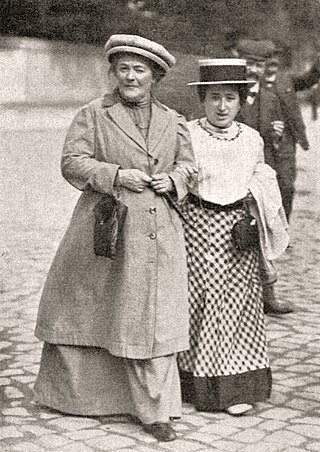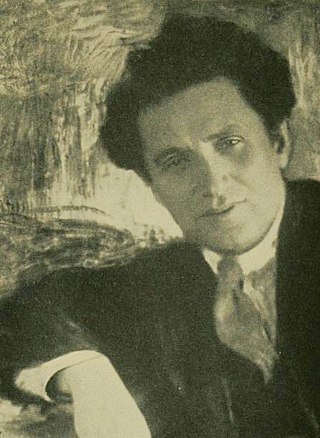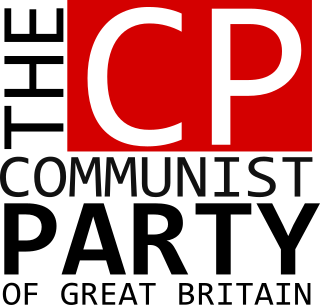A communist party is a political party that seeks to realize the socio-economic goals of communism. The term "communist party" was popularized by the title of The Manifesto of the Communist Party (1848) by Karl Marx and Friedrich Engels. As a vanguard party, the communist party guides the political education and development of the working class (proletariat). As a ruling party, the communist party exercises power through the dictatorship of the proletariat. Vladimir Lenin developed the idea of the communist party as the revolutionary vanguard, when the socialist movement in Imperial Russia was divided into ideologically opposed factions, the Bolshevik faction and the Menshevik faction. To be politically effective, Lenin proposed a small vanguard party managed with democratic centralism which allowed the centralized command of a disciplined cadre of professional revolutionaries. Once a policy was agreed upon, realizing political goals required every Bolshevik's total commitment to the agreed-upon policy.

The Communist International (Comintern), also known as the Third International, was an international organization founded in 1919 that advocated world communism, and which was led and controlled by the Communist Party of the Soviet Union. The Comintern resolved at its Second Congress in 1920 to "struggle by all available means, including armed force, for the overthrow of the international bourgeoisie and the creation of an international soviet republic as a transition stage to the complete abolition of the state". The Comintern was preceded by the dissolution of the Second International in 1916. Vladimir Lenin and Leon Trotsky were both honorary presidents of the Communist International.

Mikhail Markovich Gruzenberg, known by the alias Borodin, was a Bolshevik revolutionary and Communist International (Comintern) agent. He was an advisor to Sun Yat-sen and the Kuomintang (KMT) in China during the 1920s.

Bertram David Wolfe was an American scholar, leading communist, and later a leading anti-communist. He authored many works related to communism, including biographical studies of Vladimir Lenin, Joseph Stalin, Leon Trotsky, and Diego Rivera.
The Communist University of the Toilers of the East was a revolutionary training school for important communist political leaders. The school operated under the umbrella of the Communist International and was in existence from 1921 until the late 1930s. Part of the university was split into the Moscow Sun Yat-sen University.
The National Minority Movement was a British organisation, established in 1924 by the Communist Party of Great Britain, which attempted to organise a radical presence within the existing trade unions. The organization was headed by longtime unionist Tom Mann and future General Secretary of the CPGB Harry Pollitt.
Moscow Sun Yat-sen University, officially the Sun Yat-sen Communist University of the Toilers of China, was a Comintern school which operated from 1925 to 1930 in the city of Moscow, Russia, then the Soviet Union. It was a training camp for Chinese revolutionaries from both the Kuomintang (KMT) and the Chinese Communist Party (CCP) that was split off from the Communist University of the Toilers of the East. Its relationship to the Comintern's International Liaison Department remains unclear.
Philosophy in the Soviet Union was officially confined to Marxist–Leninist thinking, which theoretically was the basis of objective and ultimate philosophical truth. During the 1920s and 1930s, other tendencies of Russian thought were repressed. Joseph Stalin enacted a decree in 1931 identifying dialectical materialism with Marxism–Leninism, making it the official philosophy which would be enforced in all communist states and, through the Comintern, in most communist parties. Following the traditional use in the Second International, opponents would be labeled as "revisionists".

The 10th Congress of the Russian Communist Party (Bolsheviks) was held during March 8–16, 1921 in Moscow, Russia. The congress dealt with the issues of the party opposition, the New Economic Policy, and the Kronstadt rebellion, which started halfway through the Congress. The Congress was attended by 694 voting delegates and 296 non-voting delegates.

Wolfgang Leonhard was a German political author and historian of the Soviet Union, the German Democratic Republic and Communism. A German Communist whose family had fled Hitler's Germany and who was educated in the Soviet Union, after World War II Leonhard became one of the founders and leaders of the German Democratic Republic until he became disillusioned and fled in 1949, first defecting to Yugoslavia and then moving to West Germany in 1950 and later to the United Kingdom. In 1956 he moved to the United States, where he was a popular and influential professor at Yale University from 1966 to 1987, teaching the history of communism and the Soviet Union, topics about which he wrote several books. After the Cold War ended, he returned to Germany.

The Irish Worker League was an Irish communist party, established in September 1923 by Jim Larkin, following his return to Ireland. Larkin re-established the newspaper The Irish Worker. The Irish Worker League (IWL) superseded the first Communist Party of Ireland and became Ireland's affiliate with the Communist International.

Elena Dmitriyevna Stasova was a Russian Soviet revolutionary, Old Bolshevik and an early leader of the organisation that would go on to become the Communist Party of the Soviet Union.

The 2nd World Congress of the Communist International was a gathering of approximately 220 voting and non-voting representatives of communist and revolutionary socialist political parties from around the world, held in Petrograd and Moscow from July 19 to August 7, 1920. The 2nd Congress is best remembered for formulating and implementing the 21 Conditions for membership in the Communist International.
The 1st Congress of the Communist International was an international gathering of communist, revolutionary socialist, and syndicalist delegates held in Moscow which established the Communist International (Comintern). The gathering, held from March 2 to 6, 1919, was attended by 51 representatives of more than two dozen countries from around Europe, North America, and Asia.

The Communist Women's International was launched as an autonomous offshoot of the Communist International in April 1920 for the purpose of advancing communist ideas among women. The Communist Women's International was intended to play the same role for the international women's movement that the Red Peasant International played for poor agrarians and the Red International of Labor Unions played for the international labor movement.

Karl Berngardovich Radek was a revolutionary and writer active in the Polish and German social democratic movements before World War I and a Communist International leader in the Soviet Union after the Russian Revolution.

Grigory Yevseyevich Zinoviev was a Russian revolutionary and Soviet politician. A prominent Old Bolshevik, Zinoviev was Vladimir Lenin's closest associate prior to 1917 and a leading government figure in the early Soviet Union, serving as chairman of the Communist International (Comintern) from 1919 to 1926.

The Communist Party of Great Britain (CPGB) was the largest communist organisation in Britain and was founded in 1920 through a merger of several smaller Marxist groups. Many miners joined the CPGB in the 1926 general strike. In 1930, the CPGB founded the Daily Worker. In 1936, members of the party were present at the Battle of Cable Street, helping organise resistance against the British Union of Fascists. In the Spanish Civil War, the CPGB worked with the USSR to create the British Battalion of the International Brigades, which party activist Bill Alexander commanded.

The Executive Committee of the Communist International, commonly known by its acronym, ECCI (Russian acronym ИККИ - for Исполнительный комитет Коммунистического интернационала), was the governing authority of the Comintern between the World Congresses of that body. The ECCI, established by the Founding Congress of the Comintern in 1919, was dissolved with the rest of the Comintern in May 1943.

Bolshevization of the Communist International has at least two meanings. First it meant to change the way of working of new communist parties, such as that in the UK in the early 1920s. Secondly was the process from 1924 by which the pluralistic Communist International (Comintern) and its constituent communist parties were increasingly subject to pressure by the Kremlin in Moscow. The autonomy of national communist parties was downplayed and the Comintern became a tool of Soviet foreign policy.













